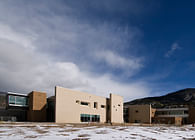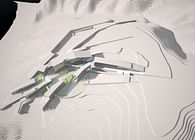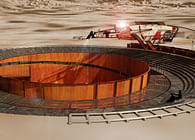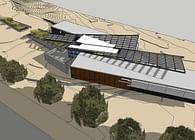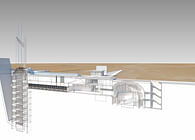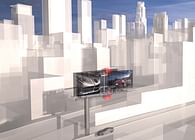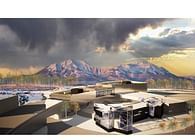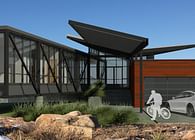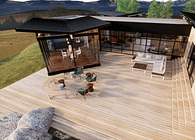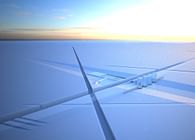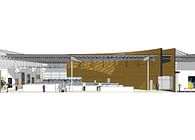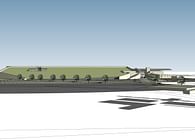
Colorado Springs, CO, US
Program: 1.2mm SF Eco-focused campus facility to house facilities for the Genetic Engineering, BioGenetic and BioSciences, and the associated library, administrative, and international conference facilities.
Narrative: In all human gestures that seek to create form and convey meaning, landscapes represent a uniquely rarified type of conflict and tension. At a certain level, this conflict can be understood as a conflicted polarity between form and substance, between the logical and the empirical, and between the idealized and the constructed reality of what is often unintended consequences. Much of our built environment today reflects the paradoxical and confused nature of our conflicted intents, and is often asked to withstand not only the human desire for order, but also our wish to impose a certain form upon the world. The modern narrative, which believes in progress and human productive forces, has been convinced that the resistance shown by the natural world should be overcome, with said resistance becoming integrated into a dialectic in which humankind would always be the dominant and triumphant force. This project places itself at the very centre of this narrative and questions it’s durability as a modern operative.
It is not a question of re-aligning a given hierarchy, or of tracing a path between our different understandings of architectural structures. Rather, it’s a matter of examining the possibility that nature itself might be the guide for architecture and, more specifically, for urban design. As such, this proposition does not imply forgetting the different rationales, techniques, and functional requirements that the discipline of architecture involves, nor does it imply the possibility of an architecture that, as Rosario Assunto says in Nature and Reason, mimetically reproduces nature. Instead, it proposes disconnecting architecture from euclidian geometry and conceiving of an architecture which begins and ends in nature. In specific, it proposes an architecture which seeks to merge the technosphere of our creation with the biosphere of our inheritance.
The project develops themes that bring us closer to understanding the possible relationship between architecture and landscape. As such, we begin to question the relationship between object and context to the point where their normal hierarchies dissipate and become more fluid - at what point is context seen as the object and the object as context? It does not seek to simplify this relationship, but rather to emphasis it’s wide-ranging and problematic nature. It is proposed herein that the conversation cannot be encapsulated or restated as a set of programmatic or disciplinarian principals. but rather that the themes of landscape are so profound that it would oblige us to re-examine many other arts and sciences allied to architecture if we are to find success in the new millennium. Only in that way would it be possible to establish a rigorous framework for the idea of both architecture and landscape sharing the simultaneously evolving roles of both object and context. In following the processes of the natural world, perhaps we begin to see our existence less as an empirical ‘finish line’ and more of a ‘moving finish line’. As Eric Owen Moss states, perhaps we become ‘less interested in the chronology of constants and more interested in the consistency of variables’.
Status: Unbuilt
Location: University of California-Dan Diego, San Diego, California, USA
My Role: Architect and Master Planner
Additional Credits: Kenny LaGreca, PE, Brian Elyo, Ryan Eckstrom, Richard Mapes

